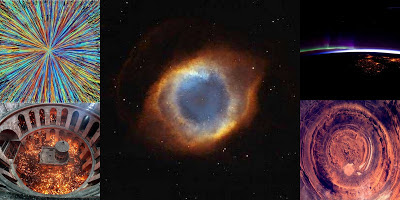Temporal
The Sources
of Faith Impoverishment and
Apostasy
from God,
and
the Way to Avoid This.
• Nov. 25th, 2013 at 1:21 PM
Moscow Metropolitan Philaret: “By mixing up the concept of Truth to the
extreme of darkening [the mind], especially
under plausible pretexts. And this is, in essence, Satan who appears in the
guise of an angel of light (2 Cor.
11:14 ). Thus, by the time of the Antichrist truth will be fully destroyed on earth
in both life and in concepts – and that will take place unbeknownst to people. Of those being saved able to avoid this net
will be only those who incessantly monitor themselves, whether they have not
fallen in some confusion of concepts. [Over]
Self-confidence can easily be robbed and entangled in nets of confusion.” (Metr.
Filaret /Drozdov/. Commentary to the works of St. Gregory of Sinai).
“You start with thinking about God and the devil knock
you [down] with SOVOPROSNICHESTVO [making up questions – IN DOUBT] and curiosity about
the mysteries of Scripture, which cool [you]
down and develop pernicious conceit. You would take care of not offending
anyone, and he will knock you [down] on pernicious
servility to men. You would fear not to condemn, and he hastens to waft at you
indifference both to good and to evil. Also in many other things the enemy [of man] entangles his own, – St. John says – love
for strangers [hospitality] – with gluttony;
sense of judgment – severity; meekness – with duplicity; joy – with self-esteem;
hope – with laziness and so on. You see the way he plants [his seed, i.e. makes his preparations], the way these
assassination attempts are called by people experienced in combating the enemy.
You see how much plantation-preparations and exacerbation of the care for vigilance.”
(St. Theofan the Recluse “On Repentance ...”, page 225).
This confusion of concepts is diverse [multifacetous], and lately Satan has begun to act with huge force, and just as huge
covertness – what used to be impossible – through the evil teachers of the so-called
“official church” (in different countries – differently, in ours [Russia] through the so-called “Sovetzkaya church”
MP). Especially so, in front of my eyes humility is transforming into humility
before the evil; love for one’s neighbor – into simple servility to men, where
God is – as a matter of course, in any case – always in the second place; and love
for the enemy – into love for his evil, when even the very concept of the enemy
is absent specifically, taken away. This latter transformation (or rather, a
perversion of the Christian morality) is the worst, especially when word goes
not about universal, public interest, but about the Truth – which in this
context is perceived as an action of the enemies of Truth.
Salvation from this can only take place – as already
said above – in incessant monitoring oneself, and what is most important: in verification
of all one’s activities against the Holy Gospel. I must say to myself from the
very start, “this Book is the only true, the most major, the very basic source
of knowing God, which I need to comprehend in perfect purity, renouncing all my
knowledge, even everything human, to the extent possible – in any case”, and
reading it, [I should] follow it. And my knowledge
itself, eventually, I am to reconcile with the Gospel – whether it corresponds to
it or not. The Gospel is the light of Truth, and the fact that it seems supposedly
“dead”, immaterial in the present life, the reason for this is not it [the Gospel] (as some do believe due to their small
faith), and not the external conditions, either, but their own helplessness and
coldness of heart.








